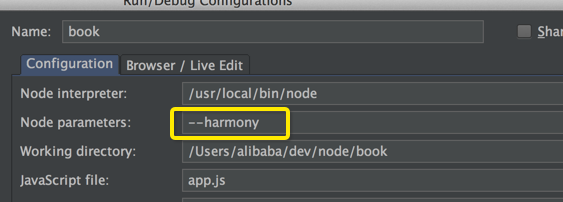Appearance
应用环境配置
我们通常通过环境变量,来区分各个应用的部署环境,根据不同的环境使用不同的配置,比如在开发环境中,我们将错误堆栈信息直接抛到页面中,而在生产环境中,我们会跳转到一个友好的错误页面。
启动应用时,可以带上定义的环境变量:
shell
NODE_ENV=development node --harmony app.js我们配置了个 NODE_ENV 环境变量,定义为开发环境(development)。
(PS: WIN下配置环境变量的方式不同,需要使用 set NODE_ENV=development。)
打开 config/config.js,可以找到针对开发环境做的配置:
javascript
var _ = require('underscore');
//本地/开发环境配置
var local = require('./local');
if(process.env.NODE_ENV === 'local' || process.env.NODE_ENV === 'development'){
//使用local.js中的配置覆盖config.js中的配置
config = _.extend(config,local);
}process.env 包含了应用所有配置的环境变量。
local.js 的配置内容如下:
javascript
module.exports = {
"env":"local",
"debug": true
};为了方便中间件获取应用配置,我们将配置信息,注入到中间件上下文:
javascript
var config = require('./config/config');
app.use(function *(next){
//config 注入中间件,方便调用配置信息
if(!this.config){
this.config = config;
}
yield next;
});路由中获取配置:
javascript
app.get('/config',function *(){
var config = this.config;
this.body = config.env;
});页面输出是 local ,说明生产环境中 env 配置项已经被 local.js 中的配置所覆盖。
可以在 webstorm 中配置环境变量,第一章有提到:


